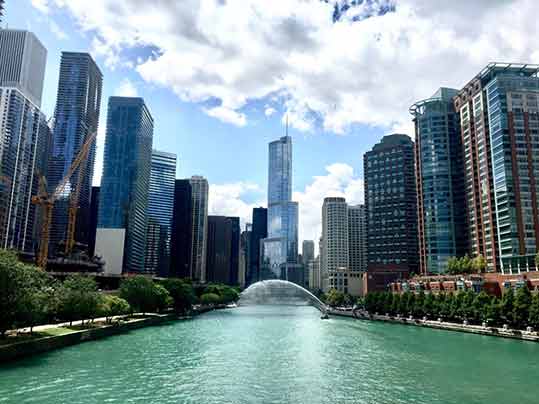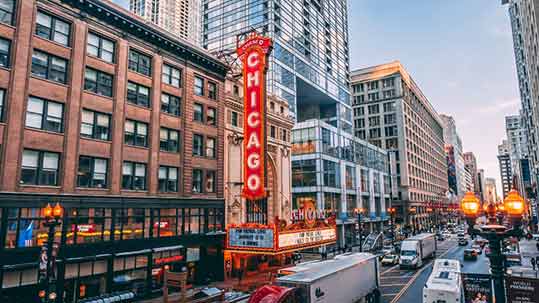
The process of managing, regulating, and preventing the influx of water into an area is known as flood control. Snowmelt and prolonged periods of heavy rain can cause flooding. Large-scale property destruction and hazardous traffic conditions can also result from flooding. A sewer flood control system exists on the sewer line of private property. A flood control system is essential for Chicago, Illinois, and the surrounding suburbs, where the municipal sewer systems are susceptible to overload.
In order to safeguard people and property from the harmful impacts of floods, flood controls are put in place. These flood control devices exist to divert water from your property or lessen its volume. Because of the city’s old sewer infrastructure in several sites, Chicago, Illinois, needs flood control. In addition, the old sewer design was for a much lower population in the past. In this article, we at Chicago Plumbing Experts would like to share everything you need to know about flood control in Chicago.
The stormwater management program is an important part of flood control in Chicago
The Chicago stormwater management program is an all-encompassing strategy for controlling stormwater runoff and lowering the risk of floods. The Chicago Department of Water Management (DWM) and the Chicago Department of Transportation (CDOT) run the program. The program involves a variety of stormwater management measures, including using green infrastructure to catch and filter runoff, such as rain gardens, green roofs, and permeable pavements. The initiative also entails maintaining and updating the city’s sewer system, which includes building new sewers and repairing and replacing existing ones. Public education and communication are crucial components of the stormwater management program. The city gives residents and businesses information on participating in stormwater management.
Flood control in Chicago is complex because the city needs it to function correctly. Many big cities have a lot of logistical issues that complicate our daily lives. That’s why many people are finding out that smaller cities are convenient. Moving companies are noticing that more people prefer to relocate from big cities to smaller towns. For example, many people from Chicago are looking to move to Englewood, CO, as it offers many lifestyle benefits. If you are considering a similar relocation, get expert help in the area for packing, moving furniture, etc. This will make moving a lot more convenient.

The Tunnel and Reservoir Plan (TARP) is designed to reduce flooding and is one of the mechanisms for flood control in Chicago.
The combined sewer system is a problem for flood control in Chicago
Some older cities, like Chicago, have a sewer system called a combined sewer system. Stormwater runoff and wastewater convey in the same pipes in an integrated sewer system. As a result, during intense rainfall, the water running through the system may drastically rise, resulting in flooding and emergency sewage backups. Stormwater and wastewater were initially intended to be handled by combined sewage systems. However, as cities expanded and developed, more impervious surfaces, such as roads and buildings, were added, increasing runoff. The integrated sewer systems frequently cannot handle the increased water flow, resulting in overflows and flooding.
Many cities with combined sewer systems are investing in infrastructure improvements to segregate rainwater and wastewater to alleviate this problem. For example, the Deep Tunnel Project, commonly known as the Tunnel and Reservoir Plan (TARP), is being implemented in Chicago to address this problem. The TARP program entails building a network of tunnels and reservoirs to collect and hold extra rainfall and sewage during periods of heavy rain, lowering the likelihood of overflows and flooding. Overall, if combined sewer systems are not adequately maintained, they can severely threaten the environment and public health. To lower the risk of flooding and sewage backups, communities like Chicago are investing in infrastructure renovations and other strategies. Dealing with this+ issue is a big project for flood control in Chicago.

Another way of regulating flood problems in Chicago is opening the sewers and dumping the water in lake Michigan during a torrential downpour.
You can take measures to reduce the risk of flooding
In Chicago, property owners can take precautions to lower the risk of flooding on their premises. Various flood-resistant building materials on the market can guard against flood damage to residences and commercial buildings. For instance, green boards, a type of water-resistant drywall, can be utilized in flood-prone areas. Elevating appliances like washing machines and water heaters above flood level can help shield them from flood damage. You can upgrade electrical components like circuit breakers and outlets. Finally, a sump pump is installed in a home’s basement or crawlspace to remove water that collects during prolonged periods of heavy rain.
Trees and other plants can help absorb water and prevent runoff. This can be especially useful in places with impervious surfaces, such as concrete and pavement. In general, there are many steps property owners can take to lessen the risk of flooding in their own homes. Property owners can help prevent flood damage to their homes and businesses by proactively managing stormwater.

A good idea for your home is to construct interior barriers to stop low level water from entering your basement.
Take safety precautions when flood control in Chicago fails
In regions like Chicago, prone to flooding, it is crucial to exercise caution. First, recognize whether your property is near a flood plain and watch for local weather patterns that can cause flooding. Then, make an emergency plan for a flood for you and your family. This needs an evacuation strategy, a planned meeting spot, and emergency contacts. If you need to leave immediately, prepare an emergency kit with the necessities, including food, water, first aid supplies, and critical papers. Before leaving, turn off the water, gas, and power to lower the possibility of harm or property damage. Because of the hidden debris and swiftly moving currents, floodwaters can be hazardous. Avoid driving or walking in floodwaters; if at all feasible, get to higher ground.
If local authorities issue an evacuation order, heed it right away. Early evacuation can save lives and aid in harm prevention. Following safety steps can lessen the chance of suffering harm or property loss during a flood. You can safeguard yourself and your family in the case of a flood by being ready and informed. So, when flood control systems in Chicago fails, take safety precautions.